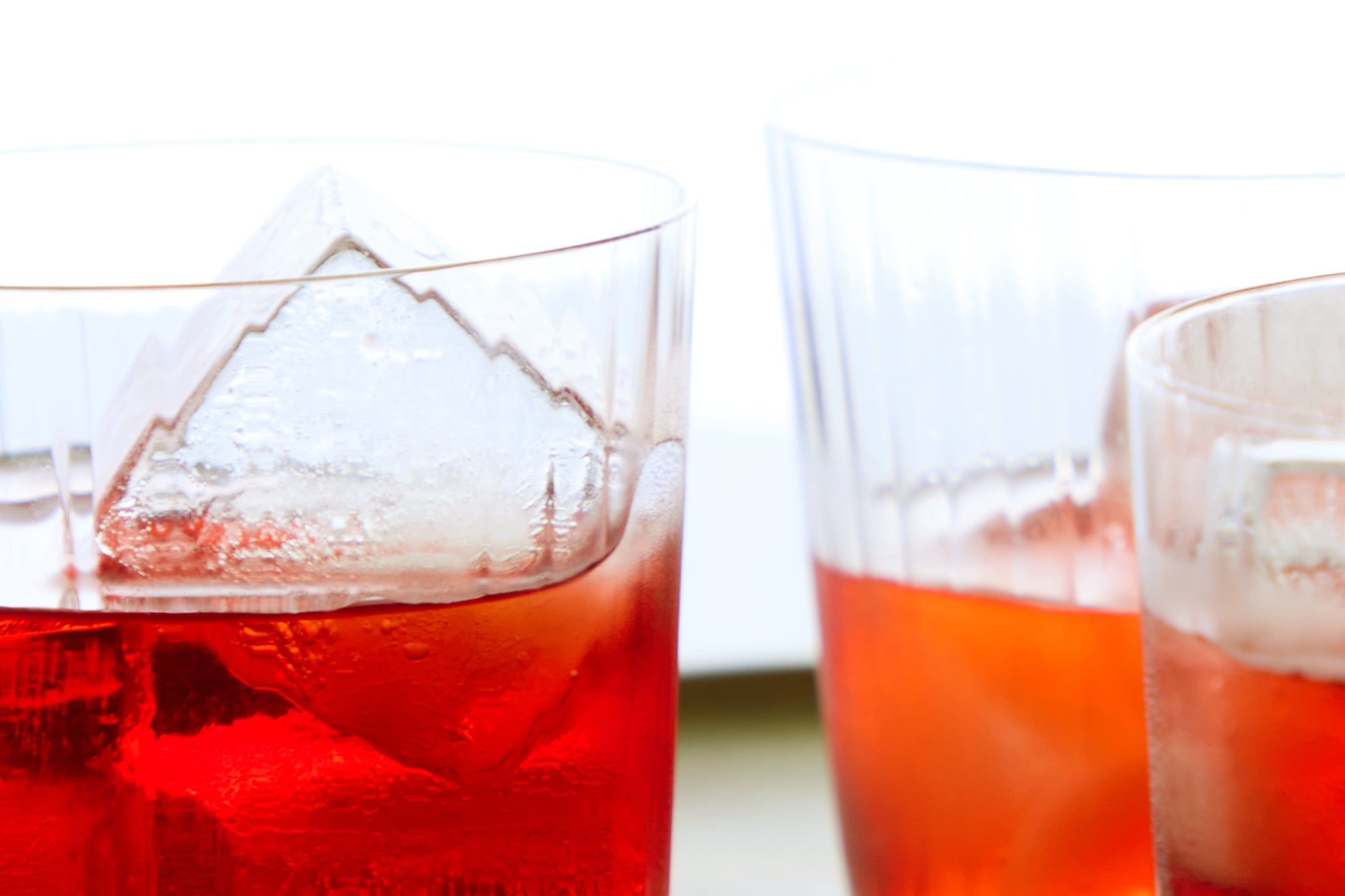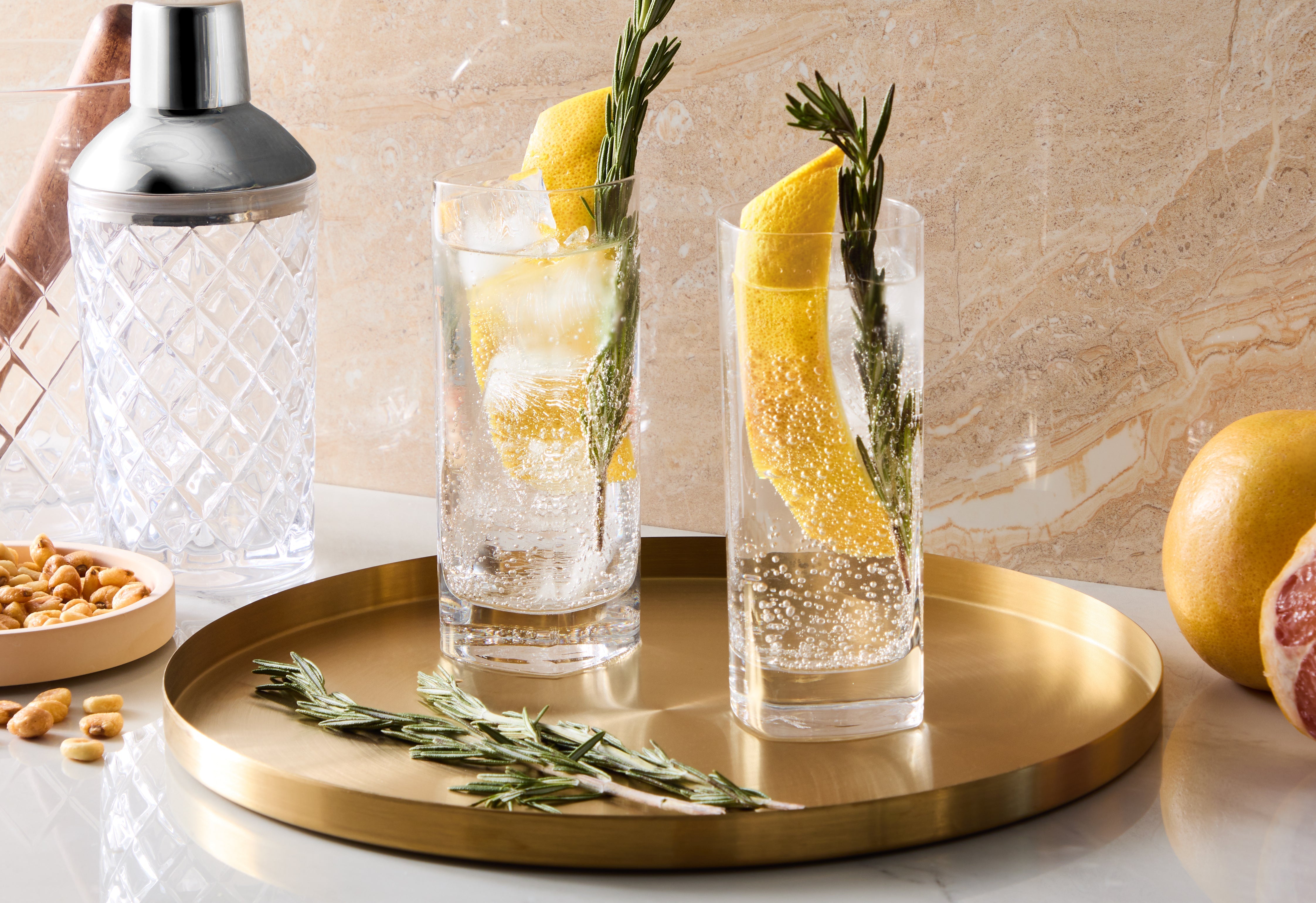Nicole has graced us with her wisdom as one of Art and Cook's contributing recipe developers. Keep an eye out for her delicious and unique cocktail creations on our blog.
Her latest masterpiece in our digital studio is the Mango De Mercado. Check it out!
We met up with Nicole Kanev, bartender and founder of Inspired Curated Cocktails, to get the scoop on ice.
Interviewed by Art and Cook
Q: How’s this for an ice-breaker? What’s your favorite type of ice?
A: I love a big clear cube of ice, because it can make even a simple pour of whiskey look stunning!
Q: How do you make ice that’s crystal clear?
A: The key to making clear ice is something called “directional freezing.” You want the water to freeze from top to bottom, which is not how it normally happens in your freezer at home. In regular ice trays, water freezes from all directions. Plus, air and impurities in the water get trapped in the freezing water, making the ice cloudy. It is possible to force water to freeze in one direction so that all impurities settle to the bottom and leave the ice on top crystal clear. You can do this at home with a simple cooler and water. There are also gadgets on the market that have special boxes and trays for getting those perfect crystal clear cubes.
Q: How much does the water matter when it comes to making ice?
A: Honestly, if the water tastes good and is safe to drink, it’s good enough for my ice cubes.
Q: Does it matter what type of ice you put in a cocktail shaker?
A: The type of ice you put in the shaker doesn’t matter as much as how you treat the ice once it’s in there. For example, if you have big, dense ice cubes, then you must shake the drink longer and harder than you would if you began with crushed ice, which will break down and dilute your drink if you shake too long and hard. If you’re pouring a drink over crushed ice, then it’s important to add just a tiny amount of ice to the shaker, so the cocktail won’t promptly become over-diluted in the glass. If you’re serving a drink up (“up” means the drink is poured through a strainer into a glass and served with no ice), then you need to add more ice to the shaker because this is the drink’s only opportunity to dilute and chill.
Q: So, how do you prefer to serve drinks, up or on the rocks?
A: Honestly, it depends on the drink. On one hand, I don’t love the possibility of ice over-diluting a drink that sits too long in the glass. On the other hand, I don’t like the idea of a martini that’s anything other than ice-cold. I guess the moral of the story is drink fast whether it’s on the rocks or not!
Q: Have you ever cut your own ice or worked somewhere that does? What is that like?
A: I have. At one of my jobs, we had these huge 3-inch cubes that we shaped with an ice pick to fit into rocks glasses. I’ve never worked somewhere with big slabs that you can cut into all shapes and sizes, but I know the benefit of that approach is that you can fit your ice to each glass and really elevate the presentation.
Q: Love it! Bespoke ice! What’s the most interesting thing you’ve done with ice for a drink?
A: Last year I made a cocktail for a menu at a Portuguese restaurant. I called it Fumo Branco—it was a play on a white Negroni using white port wine. It featured a large sphere of ice which was made with a rosemary and pink peppercorn tincture. The ice molds also had grapefruit peels and rosemary sprigs added to them, which gave the otherwise clear drink a beautiful visual component. As the ice melted, the tincture released the peppercorn and rosemary aromatics, adding another layer of flavor to the drink. In this case, the melting ice was a benefit, not a problem.
Q: Would you consider yourself an ice snob?
A: Not really, at least not as much as some bartenders I know. I can work with what I’ve got. But I do draw the line at what I call “gas station ice." You know the kind that comes in a 5-pound bag that you have to bang on the ground to break up? It would kill me to use that in someone’s drink.
Q: Is it true that ice can bring out aromatic flavors in certain spirits like whiskey and scotch? How does that work?
A: Yes, this is true. A scientist could explain why better than me, but here’s how I understand it. The water does two things. One, it breaks up some of the molecules in the whiskey. Two, it lowers the alcohol level (dilution). Both of those things help to release aromatics that are otherwise undetectable to most people’s palate, and those aromas contribute to the pleasure of the drinking experience.




Join the Discussion